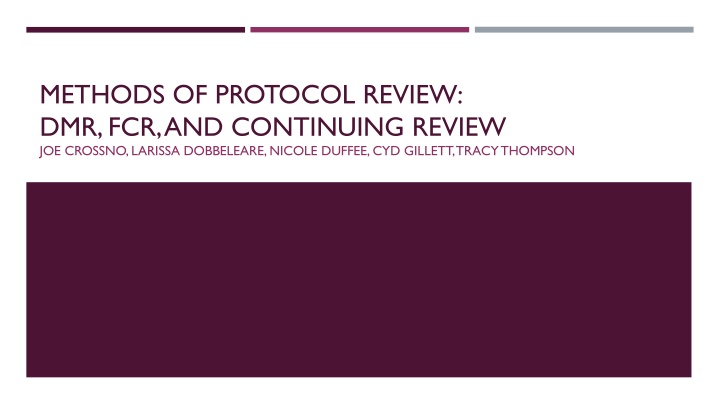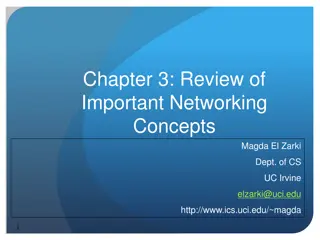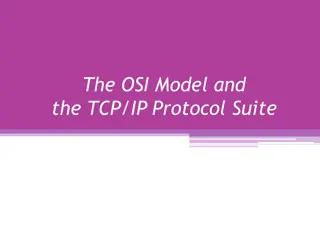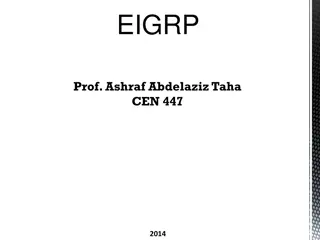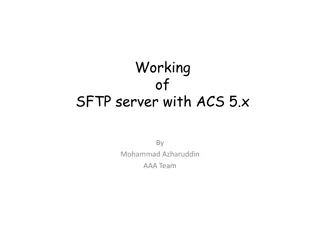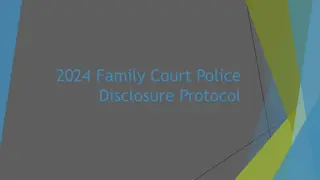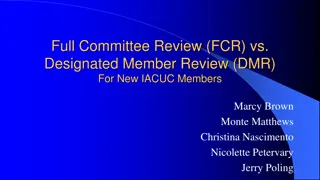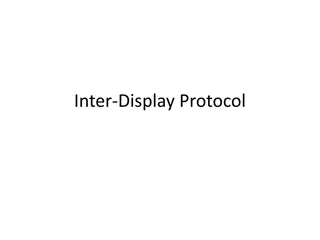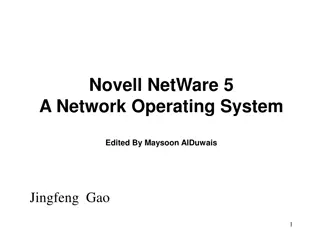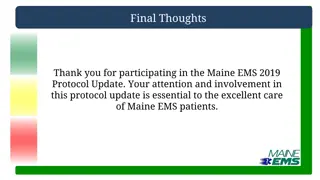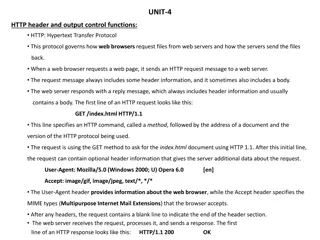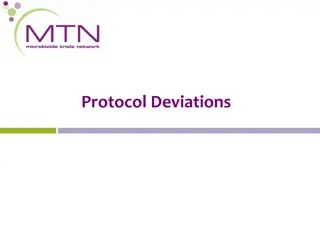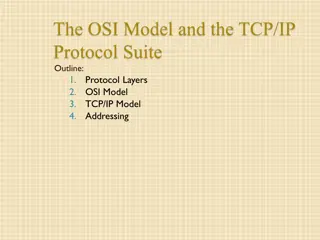Comprehensive Overview of Protocol Review Methods
Delve into the realm of Designated Member Review (DMR), Full Committee Review (FCR), and Continuing Review with experts Joe Crossno, Larissa Dobbelaere, Nicole Duffee, Cyd Gillett, and Tracy Thompson. Explore the goals, objectives, and options for assessments in understanding when to use DMR and FCR, evaluating their impacts on regulatory burdens, animal welfare, and occupational safety. Gain insights into contrasting the Public Health Service (PHS) Policy and Animal Welfare Act (AWA) for continuing reviews, and formulate guidance for conducting thorough reviews effectively.
Uploaded on Oct 09, 2024 | 0 Views
Download Presentation

Please find below an Image/Link to download the presentation.
The content on the website is provided AS IS for your information and personal use only. It may not be sold, licensed, or shared on other websites without obtaining consent from the author.If you encounter any issues during the download, it is possible that the publisher has removed the file from their server.
You are allowed to download the files provided on this website for personal or commercial use, subject to the condition that they are used lawfully. All files are the property of their respective owners.
The content on the website is provided AS IS for your information and personal use only. It may not be sold, licensed, or shared on other websites without obtaining consent from the author.
E N D
Presentation Transcript
METHODS OF PROTOCOL REVIEW: DMR, FCR, AND CONTINUING REVIEW JOE CROSSNO, LARISSA DOBBELEARE, NICOLE DUFFEE, CYD GILLETT, TRACY THOMPSON
GOALS At the end of this session, you will be able to understand use of Designated Member Review (DMR) and Full Committee Review (FCR) for protocols and You will be able to understand Continuing Review of protocols
OBJECTIVES USE OF FCR AND DMR Differentiate between FCR and DMR. Justify the use of FCR and DMR. Evaluate how the use of FCR and DMR may affect regulatory burden, animal welfare and occupational safety. Formulate guidance on when to use FCR and DMR.
OBJECTIVES CONTINUING REVIEW Contrast the PHS Policy and AWA when using continuing review. Evaluate how continuing review may affect regulatory burden, animal welfare and occupational safety. Formulate guidance on conducting continuing review.
OPTIONS FOR ASSESSMENTS FCR / DMR Differentiate between FCR and DMR.
OPTIONS FOR ASSESSMENTS FCR / DMR Justify use of FCR and DMR.
OPTIONS FOR ASSESSMENTS FCR / DMR Formulate guidance on when to use FCR and DMR.
OPTIONS FOR ASSESSMENTS FCR / DMR Evaluate how use of FCR and/or DMR may affect regulatory burden, animal welfare and occupational health and safety.
OPTIONS FOR ASSESSMENTS CONTINUING REVIEW Contrast the PHS Policy and AWA when using continuing review.
OPTIONS FOR ASSESSMENTS CONTINUING REVIEW Evaluate how continuing review may affect regulatory burden, animal welfare and occupational health and safety.
OPTIONS FOR ASSESSMENTS CONTINUING REVIEW Formulate guidance on conducting continuing review.
OPTIONS FOR ASSESSMENTS FCR/DMR Differentiate between FCR and DMR.
Concept map or decision tree to differentiate between FCR and DMR One member calls for FCR DMR All members agree to DMR FCR members not unanimous to approve IACUC decision to PI Animal research protocol submitted to IACUC office All members have chance to see protocol Majority votes to disapprove IACUC Chair may designate members for reviewing protocol Majority of members vote to approve DMR
CONTRAST THE PHS POLICY AND AWA WHEN USING CONTINUING REVIEW Great Eastern University conducts continuing review of protocols by review of PAM report summaries of all active research studies at semi-annual program review. Q: Does this method satisfy: A) Animal Welfare Act B) PHS Policy C) Both
CONTRAST THE PHS POLICY AND AWA WHEN USING CONTINUING REVIEW Look up and use the AWA and PHS Policies to re-evaluate and discuss again in your groups the question of continuing review using PAM reports. Do you need to change some of your answers?
IN REVIEW Overall Assessment of Training
IN REVIEW Using what you have learned, you should be able to Differentiate between FCR and DMR. Justify the use of FCR vs DMR. Evaluate how the use of FCR vs DMR may affect regulatory burden, animal welfare and occupation safety. Formulate guidance on when to use FCR vs DMR. Contrast the PHS Policy and AWA when using continuing review. Evaluate how continuing review may affect regulatory burden, animal welfare and occupational safety. Formulate guidance on conducting continuing review.
